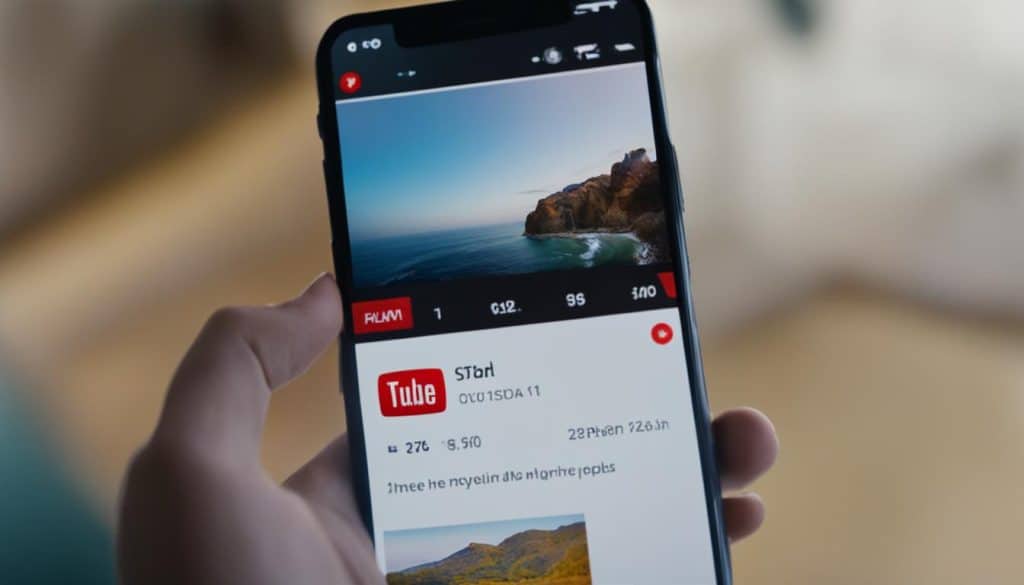Are you struggling to read the subtitles on YouTube videos? You’re not alone! Many viewers find standard subtitle sizes too small, making it tricky to follow along, especially on smaller screens. Luckily, there are easy ways to make those captions more readable. In this post, we’ll explore why subtitles are essential and how you can quickly adjust them for a better viewing experience. Let’s dive in!
Why Subtitles Matter on YouTube

Subtitles are more than just text on a screen; they play a vital role in enhancing the overall viewing experience on YouTube. Here’s why they matter:
- Accessibility: Subtitles make content accessible to a wider audience, including the deaf and hard of hearing. YouTube is a platform for everyone, and making videos inclusive opens the door to new viewers.
- Comprehension: Sometimes, accents, background noise, or fast-paced dialogue can make it hard to catch every word. Subtitles help viewers grasp what’s being said, ensuring no critical details are missed.
- Learning Aid: Many users watch educational content on YouTube. Subtitles can enhance the learning experience, especially for non-native speakers or anyone trying to learn a new language. They provide a written reference for pronunciation and vocabulary.
- Better Engagement: Videos with subtitles tend to keep viewers engaged longer. When people can follow along easily, they’re more likely to watch the entire video instead of clicking away.
- Searchability: Subtitles contribute to the overall searchability of a YouTube video. When creators add accurate captions, it increases the likelihood of their content being discovered through search engines.
To maximize these benefits, it’s essential to ensure that subtitles are not just present but also legible. The size and clarity of subtitles can significantly affect a viewer's experience. While YouTube provides basic subtitle options, customizing them can take your viewing to the next level.
In addition to textual benefits, subtitles also cater to viewers in various environments—think about people watching videos in a noisy café or a quiet library. In these situations, having clear, readable subtitles can make all the difference. It allows viewers to follow along without disrupting others or straining to hear the dialogue.
In summary, subtitles are critical for accessibility, comprehension, and user engagement. They keep viewers connected to the content and help creators reach a broader audience. If you find subtitles too small, don’t worry—we have some handy tips coming up that can help you adjust them for better readability!
Also Read This: How to Reply to a Comment on YouTube: Engaging with Your Viewers
3. Understanding YouTube Subtitle Settings
If you’re looking to enhance your YouTube experience—whether for accessibility reasons or simply for readability—understanding the subtitle settings is crucial. YouTube offers a variety of options that can help tailor your viewing experience to your needs. Here’s what you should know:
- Accessing Subtitle Settings: To access subtitle settings, simply click on the gear icon (⚙️) located at the bottom right corner of the video player. From there, look for the "Subtitles/CC" option.
- Choosing Language: Depending on the video, you may find subtitles available in multiple languages. This allows you to select subtitles that are most comfortable for you to read.
- Auto-Generated Subtitles: Keep in mind that YouTube also offers auto-generated subtitles in some cases. While convenient, they may not always be perfectly accurate, especially for videos with heavy accents or technical jargon.
- Customize Appearance: YouTube allows you to customize the appearance of the subtitles in terms of font, size, and color. This is particularly helpful for making text easier to read against various video backgrounds.
- Understanding Formats: You can choose between different subtitle formats, which include “Standard” and “Auto-translate” options. However, the quality can vary based on the video and the creator's settings.
By familiarizing yourself with these options, you can enhance your viewing experience significantly. Remember, if you can't find subtitles for a video, you might want to check if the creator has provided them—sometimes, videos may not come with this feature enabled.
Also Read This: How to Download Captions from YouTube Videos for Accessibility
4. How to Adjust Subtitles for Better Visibility
Now that you understand the basics of YouTube's subtitle settings, let's dive into some practical ways to adjust those subtitles for better visibility. Here are some easy tips to make sure you can read subtitles comfortably:
- Increase Font Size: In the subtitle settings, look for an option to increase the font size. A larger font can make a significant difference, especially when watching videos on smaller screens.
- Change Background Color: If the default background of the subtitles doesn’t contrast well with the video, change it! YouTube allows you to select a different background color, which can greatly improve readability.
- Select a Different Font Style: Sometimes switching the font style can make it easier on your eyes. Experiment with different styles to see what you prefer.
- Use Custom Color Options: Don’t hesitate to use custom colors for your subtitles. A darker text color on a lighter background (or vice versa) can often make subtitles pop more effectively.
- Adjust the Position: Some viewers find that adjusting the position of the subtitles—like moving them to the top of the screen—improves readability, especially if there are distracting elements at the bottom.
Once you’ve made these adjustments, take a moment to watch a video and see how the changes work for you. Remember, comfort is key! Finding the right visibility settings not only enhances your experience but also makes viewing more enjoyable. So go ahead, tweak those settings until you find the perfect fit for your viewing style!
Also Read This: Why Are There So Many Ads on YouTube TV? Understanding Ad Policies
5. Using Third-Party Tools for Custom Subtitles
If you want to enhance the readability of your YouTube subtitles, consider using third-party tools. These tools can offer features that YouTube’s built-in subtitle options might lack. Not only can they help you create more attractive subtitles, but they also allow for greater customization to suit your specific audience and content style.
Here are a few popular third-party tools you can explore:
- Aegisub: This is a free, open-source tool that offers powerful features for video subtitling. You can customize fonts, sizes, and even add effects like karaoke or fading.
- Kapwing: Kapwing is an online video editor that allows you to create and customize subtitles easily. You can change text size, colors, and positions, plus it provides a simple interface for editing.
- VEED.IO: This tool is user-friendly and offers various subtitle options. You can adjust the size and styling of your text, making it easier for your viewers to read.
Using these tools can elevate the subtitle experience for your audience. By customizing the appearance, you can cater to different viewer preferences, ensuring that everyone can follow along with what’s being said. Plus, an aesthetically pleasing subtitle can enhance overall viewer engagement!
Before you dive in, it's essential to keep in mind that while third-party tools can offer many advantages, it’s also vital to ensure that your subtitles synchronize accurately with the audio. Always double-check your timings and text to maintain a seamless viewing experience.
Also Read This: How to Clip Audio from a YouTube Video: Extracting and Editing Audio from YouTube
6. Best Practices for Creating Readable Subtitles
Creating subtitles that are easy to read can significantly affect viewer retention and overall satisfaction. Here are some best practices you should keep in mind:
- Use a Clear Font: Choose sans-serif fonts like Arial, Helvetica, or Verdana to keep your subtitles legible. Avoid overly stylized fonts that can be hard to read, especially for viewers watching on smaller screens.
- Maintain a Consistent Style: Consistency is key! Use the same font size, color, and placement throughout your video. This uniformity makes it easier for viewers to focus on the content rather than adjusting to different styles.
- Limit the Amount of Text: Aim to display no more than two lines of text at a time. Longer lines can quickly overwhelm viewers and make it harder for them to keep up with the video. Ideally, stick to a maximum of 40 characters per line.
- Choose Contrasting Colors: Ensure your subtitle text contrasts well with the background of your video. For instance, white or yellow text works well against darker backgrounds, while black text is better against lighter ones. Consider using a subtle shadow or outline to enhance readability.
- Timing is Everything: Make sure your subtitles appear for a long enough duration for viewers to read them without feeling rushed. A good rule of thumb is to keep subtitles on screen for 1-2 seconds for every spoken word, depending on the complexity of the text.
By implementing these best practices, you'll create subtitles that not only enhance the accessibility of your content but also improve the overall viewing experience. Viewers will thank you for making it easier to engage with your video content, and you may even see an increase in subscribers and comments!
Conclusion
In conclusion, ensuring your YouTube subtitles are easily readable can significantly enhance the viewing experience for your audience. By following the simple tips outlined throughout this blog post, such as:
- Adjusting the settings: Utilize YouTube's built-in options to change the size and style of subtitles.
- Choosing the right device: Make sure to use a device that supports better text visibility.
- Using external tools: Consider subtitles customization tools that allow for greater flexibility in size and font.
You'll create a more accessible and enjoyable experience for all viewers, ensuring they don't miss out on vital information in your content. Remember, larger, clearer subtitles not only help those who are hard of hearing but also cater to non-native speakers who may require additional time to read and understand the dialogue. Ultimately, taking the time to enhance your subtitles is an investment in your channel's overall quality and inclusivity.
 admin
admin








